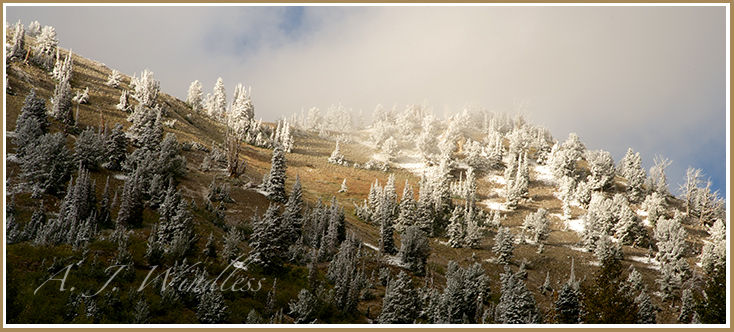| |
|
|
I looked up and took a deep breath. A ray of sunshine had broken
through and exposed the trees frocked with newly fallen snow.
Those who have lived near mountains understand that the snow
does not always fall evenly over the entire mountain. If you
stay far down in the valley below it may often look that way,
but especially in the spring and fall, often only the tops of
the mountains will get dusted with snow while the valleys will
remain dry. For every 1000 feet you climb it gets 3 degrees
(Fahrenheit) cooler. That means that if during the heat of a hot
August day you climb from Salt Lake City to the top of the
nearest rugged peak, Mt. Olympus, you will be about 15 degrees
cooler. Some days it will be cold enough to snow at the top of
the mountain, but half way down the mountain all that snow has
turned to rain. This temperature change is why deer move to the
higher elevations during the summer (which also helps them get
away from all the crazies.) Then as shown in this picture (click
here) winter and her deeper snows will drive them back into
the valley below. |
|
|
|

